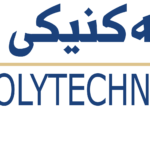- Ilaf Nawzad Rasool
- [email protected]
- 0750 348 9769
- Ilaf N. Rasool
-
One of the biggest problems in the world that we live in nowadays is the environmental pollution caused by an overconsumption of energy. When fossil fuels are burned to generate energy, it emits CO2, which is a leading cause of air pollution. Solar energy has the potential to replace fossil fuels as an alternative source of renewable energy. A photovoltaic solar system is one type of solar system that can convert the sun's light into electrical energy. One of the issues with PV panel is the high temperature of PV cells, especially in summer season when the ambient temperature can rise up to 50℃. As the temperature of solar modules increases, both the output power and the efficiency of PV panel decrease. To improve overall performance while extending the solar module's lifespan, this study proposes lowering photovoltaic cell temperature by using water cooling chamber installed at the back side of the PV panel. The proposed solar panel was developed and designed through both experimental study and ANSYS Fluent simulation. The photovoltaic module that was designed has a water-cooling chamber for the purpose of providing cooling under the condition of Erbil city. The rear side of the photovoltaic panel is cooled using water cooling chamber. The water-cooling chamber can absorb heat dissipation from the photovoltaic panel. The proposed cooling system for the solar panel is a closed cycle, and the cooling water is in contact with the back of the PV panel at different flow rates. According to experimental setup, the maximum water flow rate of 3.5 l/min gives the optimal heat transfer rate. Finally, results demonstrated an improvement in electrical efficiency by the following percentages: 10.42%, 11.87%, 13.77%, 18.09%, and 19.72% when the water volume flow rates of 1.5, 2, 2.5, 3, and 3.5 l/min, respectively, were applied. Meanwhile, the thermal efficiency of the PV system is 49.7% with a water flow rate of 1.5 l/min. and, the thermal efficiency recorded 79.2% when the system operated at a flow rate of 3.5 l/min.
- Erbil Technical Engineering College
- Mechanical and Energy
- Power
- Halmat Brhan Najm
- [email protected]
- 0750 710 6464
- pdf zanko
-
Abstract
High-strength concrete is used to reduce the size of the beams in addition to enhancing the strength,
this leads to overestimated cost in comparison with normal-strength concrete while using normal-strength concrete leads to the overestimated amount of concrete (layer size) of the beam section. For
balancing the condition between the cost and size of beams, the benefit of both materials is used, by
using beams in two layers, high-strength concrete in the compression zone (top layer), which is more
beneficial for beam strength, and normal strength concrete in tension zone (bottom layer), which is no
need using high strength concrete the in-tension zone. This study investigates the flexural and shear
behavior of reinforced concrete beams consisting of two layers with different concrete strengths
(grades), for beams with and without shear reinforcement (stirrups), considering the effect of shear-span ratio, layer thickness, layer compressive strength, and the overlap time casting of the two layers.
The experimental program consists of a total of nineteen reinforced concrete beams of dimension (125
mm x 250 mm) with a total length of 1200 mm, the beams are reinforced with longitudinal
reinforcement (4Ø12mm) and using (Ø8mm) bar as transverse reinforcement (stirrups). The
experimental results show that the crack pattern of the two-layer reinforced concrete is closer to the
crack of the control beam with one layer. Increasing the compressive strength of the concrete of the
top layer, the ultimate failure load increased by (8.35%, 15.6%, and 18.85%), with respect to the
(control beam) with the full depth of normal concrete. By increasing the high-strength layer thickness,
the value of shear strength (Vc) and ultimate shear strength (Vu) increased linearly. The casting overlap
time of up to (60 min) can be used for casting two-layered reinforced concrete beams, which is
recommended, beyond this time the strength of the shear strength (Vc) and, ultimate shear strength
(Vu) decreases. With increasing the shear span ratio (a/d) from (1 to 1.5 and 2) the ultimate load
failure decreased by (33% and 50%). The shear strength capacity decreases with increasing stirrup
spacing.
Key Words: Two-layer RC beams, HSC beams, NSC beams, Shear strength, Ultimate shear
strength. - Erbil Technical Engineering College
- Civil Engineering
- structure
- Iman Othman Ahemed
- [email protected]
- 0750 411 9498
- eman
-
هدفت الدراسة لبيان وجود أثر تبني معيار الابلاغ المالي الدولي عقود الإيجار "IFRS16 " على تحسين جودة المعلومات المحاسبية من خلال دراسة اّستطلاعية لآراء عينة من الاكاديميين والمهنيين في مدينة أربيل )، ولتحقيق أهداف الدراسة واختبار فرضياتها تم إعداد استمارة الاستبانة المتكونة من ثلاثة محاور وتم توزيعهم على الاكاديميين والمهنيين في مدينة أربيل وبلغ عدد الاستمارة الموزعة (96) استمارة ومن ثم تم تحليل النتائج باستخدام برنامج الحزمة الإحصائية للعلوم الإجتماعية (SPSS) وتم استخدام تحليل الارتباط وانحدار واختبار (t- test) لاختبار فرضيات الدراسة.
وتأسيساً على ما سبق فقد توصلت الدراسة إلى مجموعة من الاستنتاجات ومن أبرزها أثر تبني معيار الابلاغ المالي الدولي عقود الإيجار(IFRS16) على تحسين جودة المعلومات المحاسبية، و تؤكد نتائج التحليل أن هناك أثراً لتبني المعيار الإبلاغ المالي الدولي عقود الإيجار(IFRS16) وفق إجابات افراد العينة، وكما أشارت نتائج التحليل باستخدام معامل الارتباط ومعادلة الانحدار إلى وجود ارتباط خطي ايجابي معنوي مقداره (87.7%) بين معيار الابلاغ المالي الدولي عقود الإيجار(IFRS16) على تحسين جودة المعلومات المحاسبية في الدراسة الحالية التي هي ذات علاقـة وأثر معنوي عالٍ بين متغيرات الدراسة من حيث المعلومات المحاسبية التي يمكن تبنيها وتطويرها بهدف جودة المعلومات المحاسبية.ومن أهم توصيات الدراسة تبني المعيار الابلاغ المالي الدولي عقود الإيجار (IFRS16) بما فيها من فوائد وأهمية كبرى من زيادة تحسين جودة المعلومات المحاسبية، ضرورة زيادة أهتمام نقابة المحاسبين بفتح دورات تدربية لمراقب الحسابات في مجال المعايير المحاسبية الدولية ومعايير الابلإغ المالي الدولي وبالاخص، معيار الابلإغ المالي الدولي عقود الإيجار (IFRS 16) وكذلك لزيادة وعي المحاسبين في الوحدات الاقتصادية للتعامل بالتأجير التمويلى.
الكلمات الافتتاحية: معيار الأبلاغ المالي الدولي عقود الإيجار (IFRS16) ، جودة المعلومات المحاسبية.
- Erbil Technical Administrative College
- accounting technical
- accounting
- Noora Nasraddin sharif
- [email protected]
- 0750 942 0812
- first page
-
- Erbil Technical Health College
- physiotherapy
- physiotherapy


